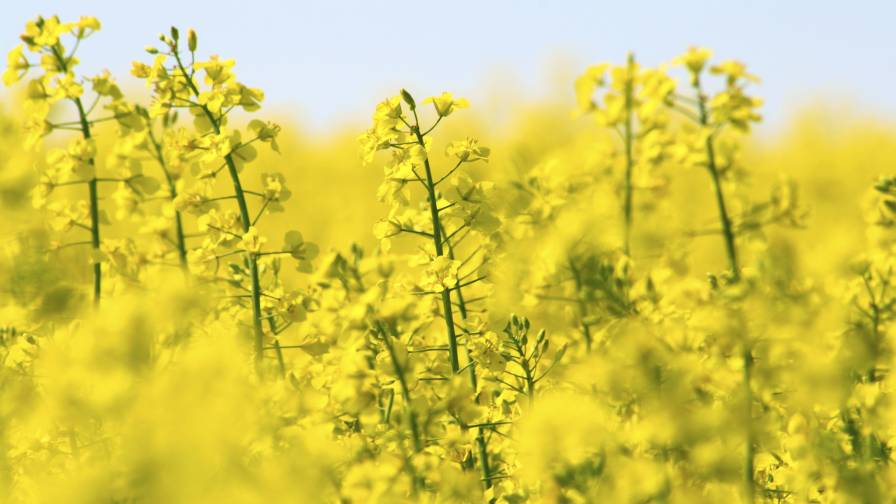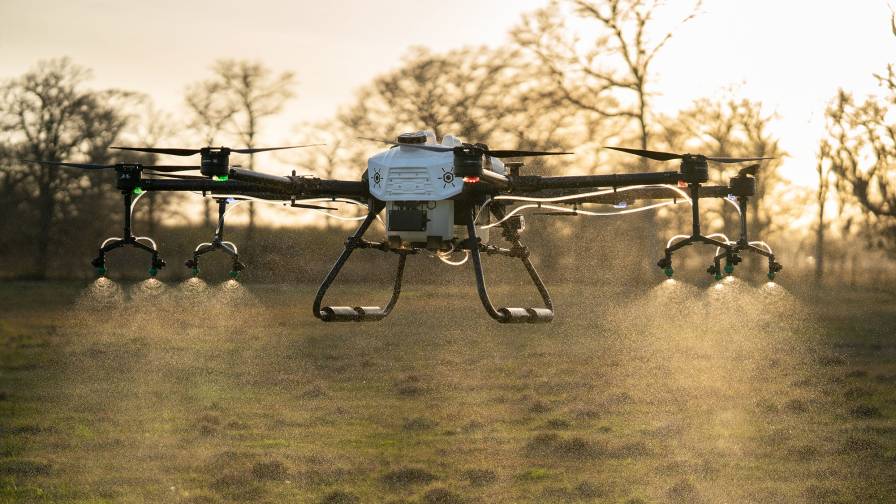West Africa Cotton Up
Burkina Faso, Mali, Cote d’Ivoire, and Benin seed cotton production may all be on the upswing this year. These four countries represent 80% of the cotton production of West Africa and 90% of the production of Francophone West Africa, according to the US Department of Agriculture’s Foreign Agriculture Service (USDA-FAS).
Seed cotton production appears to have risen in all four countries during 2005/06: Benin (450,000 tons, up 5.3%); Burkina Faso (715,700 tons, up 13.4%); Cote d’Ivoire (308,400, up 2.8%); and Mali (600,000 tons, up 2.5%).
Total cotton lint production in 2004/2005 was 808,432 metric tons (MT) and is expected to reach 869,000 MT in 2005/2006. Production from cultivated area expansion is forecast to increase in Burkina Faso, Benin, and Mali due to satisfactory rainfall and input availability. However, production in Cote d’Ivoire was expected to fall in 2005/2006 from reduced area cultivated, poor rainfall, and insufficient input availability.
In line with the World Bank/International Monetary Fund (IMF) recommendations, all four countries are pursuing steps to liberalize their state-controlled cotton sectors. Cotton production throughout Francophone West Africa was developed through the establishment of quasi-governmental parastatal cotton companies which maintained monopolistic powers over input supplies, seed cotton purchases, ginning services, transport, and marketing of lint. In turn, parastatals have provided extension services, social services, and research activities.
Privatization in Cote d’Ivoire and Burkina Faso resulted in the geographic zoning of the cotton-producing regions within which privatized cotton companies have reserved rights to operate. While a liberalized cotton sector in Cote d’Ivoire has allowed one group of producers to establish a cotton company of their own, Burkina Faso strengthened the role of all producers by granting them 10% to 30% ownership in the privatized cotton companies. In Benin, liberalization has gone the furthest as geographic zoning was avoided and input distribution was taken away from ginner control. Unique to Benin is a clearing house that arranges and distributes credit among all entities within the cotton sector, avoiding capital transactions. While producer groups in all four countries are well-organized and wield political power in their countries, producer empowerment in Benin is the weakest of the four. Mali is attempting to privatize its state-run cotton company by 2008. Common perception indicates the Burkina Faso privatization has been the most successful within the region to date.
Currently, Burkina Faso is the only country in the region field-testing Bacillus thuringiensis (Bt) cotton. Field trials began July 2003 in collaboration with Monsanto, and as a result, commercial production is expected to be approved for the 2008 crop. Throughout the trials, Burkina Faso has continued to welcome regional visitors who have expressed an interest in biotechnology. Among others, these invitations have been accepted by representatives of Benin, whose current moratorium prohibits genetically modified products until legislation is put in place. In addition to Burkina Faso, Mali has also contacted both Monsanto and Syngenta, expressing interest to develop its own field tests. The current political instability has diverted Cote d’Ivoire’s attention away from biotechnology. Currently, the government has yet to ratify the Cartagena Protocol on Biosafety, and a draft bill covering biosecurity is before the National Assembly. However, CNRA (Cote d’Ivoire Agricultural Research Institute) has suggested that if peace is restored and a legal framework established, Cote d’Ivoire will be a leader in biotechnology research.
Country Capsules
BENIN:
Cotton production is expected to be up in 2005/2006 due to sufficient and well-distributed rainfall in cotton producing areas, expanded cultivated area, efficient extension services, increased use of inputs and improved seeds, and reduced delay in seed cotton payments, reports USDA-FAS. The rainfall in 2005 has been well distributed in all producing areas and has permitted crop planting on schedule. In the regions of Collines, Zou, Couffo, and Plateau, the rains came as early as March, but it was in May and June that precipitation became more regular in all producing areas. In the regions of Borgu, Donga, Alibori, and Atacora, the rains started in June and allowed plantings and crop development throughout the growing season. The favorable climate and availability of chemical inputs have permitted area expansion in all producing areas.
The seed variety H-279-1 accounts for 98% of the area cultivated. The total seed supply in 2004/2005 was estimated at 10,668 MT. Based on the area cultivated, only 6,288 MT was planted at a rate of 20 kilograms per hectare (kg/ha). The remainder of the seeds were used in re-sowing, destroyed, or stocked in farmers’ warehouses.
The fertilizer need on cotton area in 2004/2005 was reported to be 82,609 MT of NPK (nitrogen, phosphorus, and potassium) and urea. However, the quantity of fertilizer supplied to farmers was 89,946 MT and total use was estimated at 93,050 MT. This application level was due to the non-respect of dosage, the use of past stocks, and the shift of fertilizer to uses other than cotton, such as food crop production.
The total need for insecticide use on cotton area was estimated at 2,344,122 liters or 8 liters/ha, but because of indebtedness, the quantity supplied was only 2,186,222 liters, and use was only 6.9 liters/ha. Despite the low insecticide use, insect damage was minimal during 2004/05. The three insecticides normally used are endosulfan, Binaire Acaricide, and Binaire Aphicide.
Herbicide needs are estimated at 226,949 liters, while quantity supplied was 324,621 liters and the quantity used was 324,926 liters. Not all cotton producers utilize herbicides.
In general, about 4.6% of the area cultivated was abandoned as a result of unavailability of inputs and extreme changes in climate including droughts and floods.
BURKINA FASO:
Seed cotton production reached a record of about 630,000 MT in 2004/2005 due to area expansion and good rains. Production is expected to increase again in 2005/2006 due to producer confidence in the marketing system and remuneration within the sector. Producer confidence has been boosted by a financial management that has attracted the involvement of the banking sector, efficient operation of cotton companies, good working relationships with organized producer organizations, and a large influx of expatriates returning home.
In 2004/2005, fertilizer use (NPK and Urea) was estimated at 102,000 MT and insecticide use at 27,000 hectoliters. In 2005/2006, fertilizer use is expected to be 120,000 MT and insecticide use to remain at 27,000 hectoliters.
Opening bids of input supplies for the 2005/2006 crop showed a 40% price increase in both urea and NPK. This increase was attributed to the rise in petroleum prices and the increase in transportation costs due to the situation in Cote d’Ivoire. The price of other inputs remained unchanged, with the exception of herbicides, which increased.
COTE D’IVOIRE:
Cotton production is forecast to fall in 2005/2006 due to poor rainfall, reduced area cultivated, insufficient input supply, and general insecurity. There were early rains at the beginning of May in most producing areas, but they became irregular and poorly distributed by the latter part of June. The poor rains adversely affected crop development in many producing areas. The rains have resumed since September and could cause boll rot and adversely affect cotton quality. Insufficient and late input supply to producers due to financial problems of the cotton companies coupled with non-payment of farmers’ seed cotton have contributed to reduction in area cultivated.
Production increased in 2004/2005 due to area expansion, good rainfall, input availability, and a relatively improved security situation.
MALI:
Production is forecast to increase in 2005/2006 due to satisfactory rainfall, availability of inputs, and area expansion. In 2005, there were early rains in late May which encouraged soil preparation. A short period of drought set in from the beginning of June to mid-June. Since then, the rains have been regular, abundant, and well-distributed throughout the planting and growing period. Area cultivated continues to increase due to new producers’ entry and expansion activities of those already in production. For the 2005/2006 planting, producers had a timely delivery of inputs.
Production fell in 2004/2005 despite a high producer price. This was due to a high proportion of low quality seeds planted and unfavorable rainfall during the planting and crop development period. CMDT (the Malian parastatal cotton company) supplies all inputs to producers from planting to harvest.
In the 2005/2006 crop year, CMDT pursued a quality cotton production program as the only counter against falling world market prices. Measures undertaken included improved phytosanitary treatment, early harvest and good timing of subsequent harvests, sorting of seed cotton during harvest, protection against contamination in the field, improved storage and market structures, seed cotton of the same identity to be loaded in the same containers or transported together, and permanent presence of zonal technical assistance agents at market places.
Similar quality measures started in the 2004/2005 season contributed to an increase in the proportion of first quality seed cotton to 60.4%, up from 44.2% in 2003/2004.





